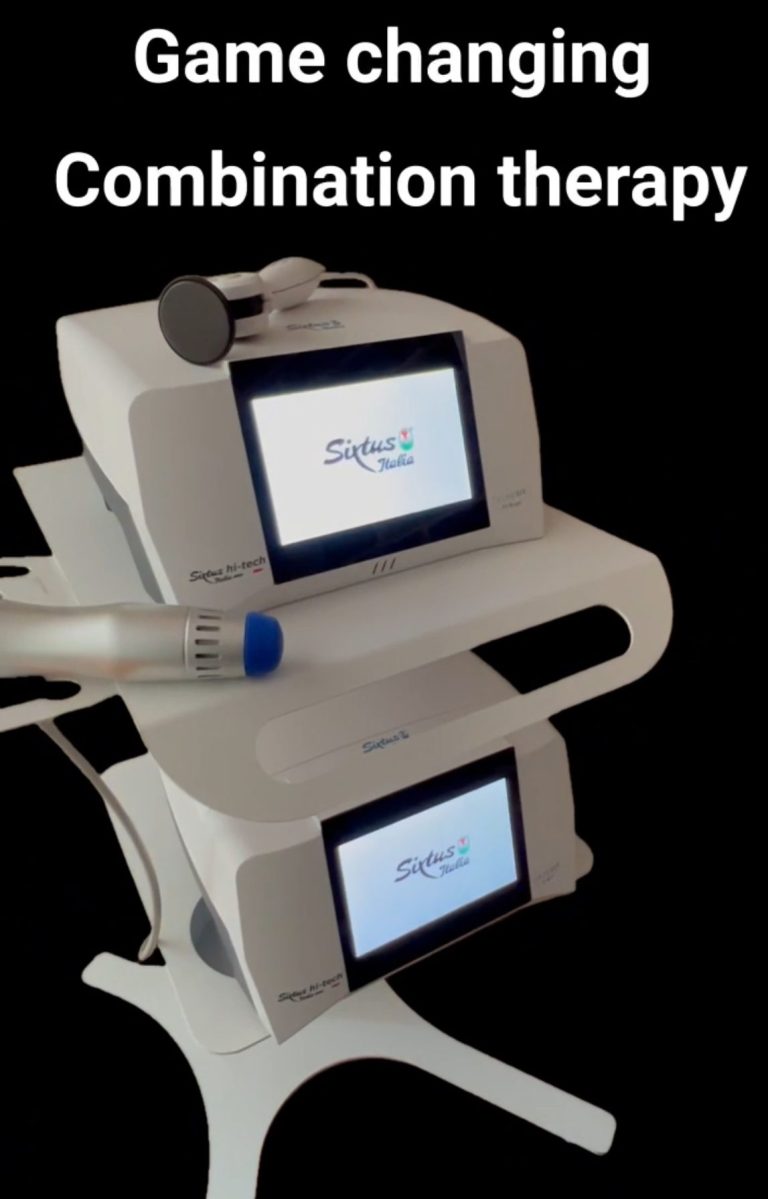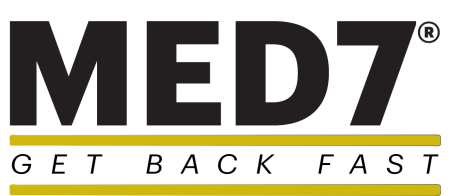FREE DELIVERY ON ALL ORDERS| TRAINING INLUDED| CHECK OUT OUR 5 ✪ RATINGS
Enhancing Recovery in Sports Medicine: Combining Shockwave and Tecar Therapy

Introduction
In sports medicine and physiotherapy, innovative treatments are continuously sought to optimize athlete recovery and performance. Two such modalities, Shockwave Therapy (SWT) and Tecar Therapy, have individually proven their efficacy in treating various musculoskeletal issues. Recent advancements suggest that their combination can yield synergistic effects, providing faster and more effective healing. This article explores the scientific basis and clinical applications of this combination therapy, specifically tailored for sports therapists, physiotherapists, and team doctors.
Shockwave Therapy: Mechanisms and Benefits
Shockwave Therapy utilizes high-energy acoustic waves to stimulate biological processes essential for healing. Key mechanisms include:
1. Neovascularization: Shockwaves induce the formation of new blood vessels, enhancing tissue perfusion and repair [1].
2. Pain Modulation: By inhibiting pain receptors, SWT offers significant pain relief [2].
3. Collagen Synthesis: Shockwaves stimulate collagen production, crucial for the repair of tendons and ligaments [3].
4. Calcification Breakdown: Effective in conditions like calcific tendinitis, SWT breaks down calcium deposits, alleviating pain and restoring function [4].
Tecar Therapy: Mechanisms and Benefits
Tecar Therapy, or Capacitive and Resistive Electric Transfer (CRET) therapy, employs radiofrequency energy to generate deep tissue heating. This modality operates in two modes:
1. Capacitive Mode: Targets superficial tissues, enhancing local blood flow and cellular metabolism.
2. Resistive Mode: Penetrates deeper tissues, reducing inflammation and promoting regeneration in tendons, ligaments, and bones [5].
The therapeutic benefits of Tecar Therapy include:
1. Enhanced Microcirculation: Improved blood flow accelerates the removal of metabolic waste and supplies nutrients for tissue repair.
2. Pain and Inflammation Reduction: Deep heating alleviates pain and decreases inflammatory responses [6].
3. Improved Tissue Elasticity: Heat application relaxes muscles and connective tissues, improving flexibility and reducing stiffness [7].
Synergistic Effects of Combination Therapy
Combining Shockwave and Tecar Therapy leverages the strengths of both modalities, offering a comprehensive approach to healing:
1. Sequential Application: Administering Tecar Therapy before Shockwave Therapy prepares tissues by enhancing blood flow and reducing stiffness, making them more receptive to shockwaves [8].
2. Optimized Healing Environment: Increased circulation, reduced pain, and improved tissue elasticity create an ideal environment for tissue repair and regeneration.
3. Accelerated Recovery: Patients often experience quicker pain relief and faster functional recovery, reducing the overall treatment duration.
4. Versatility: This combination effectively treats a wide range of conditions, including tendinopathies, muscle injuries, ligament sprains, and chronic joint disorders [9].
Clinical Applications in Sports Medicine
1. Tendinopathies: Conditions such as Achilles tendinopathy and lateral epicondylitis respond well to this combination, with SWT breaking down abnormal tissue and Tecar Therapy promoting cellular repair [10].
2. Muscle Injuries: Strains and tears benefit from enhanced blood flow and pain relief, facilitating quicker muscle regeneration [11].
3. Joint Disorders: For conditions like osteoarthritis, the combined effects on cartilage and surrounding tissues improve joint mobility and reduce pain [12].
4. Post-Surgical Rehabilitation: The combination therapy accelerates recovery, reduces scar tissue formation, and restores functional mobility, crucial for athletes returning to competition [13].
Conclusion
The integration of Shockwave and Tecar Therapy represents a significant advancement in sports medicine and physiotherapy. By harnessing the unique benefits of both modalities, practitioners can offer athletes a more effective and efficient path to recovery. As research continues to validate these synergistic effects, combination therapy is set to become a cornerstone in sports rehabilitative care, enhancing patient outcomes and performance.
References
1. Wang, C. J. (2012). Extracorporeal shockwave therapy in musculoskeletal disorders. Journal of Orthopaedic Surgery and Research, 7, 11.
2. Speed, C. (2014). A systematic review of shockwave therapies in soft tissue conditions: focusing on the evidence. British Journal of Sports Medicine, 48(21), 1538-1542.
3. Lohrer, H., & Nauck, T. (2009). Shockwave therapy in chronic Achilles tendon disorders: a randomized controlled trial. The American Journal of Sports Medicine, 37(3), 463-470.
4. Rompe, J. D., et al. (2001). Shock wave application for chronic plantar fasciitis in running athletes. Clinical Orthopaedics and Related Research, 387, 47-59.
5. Sanudo, B., et al. (2016). Tecar therapy for the treatment of acute and chronic lower back pain: a prospective, randomized, controlled trial. Journal of Back and Musculoskeletal Rehabilitation, 29(4), 727-733.
6. Madoni, C., et al. (2017). Effectiveness of tecar therapy for treating acute and chronic musculoskeletal pain. Journal of Physical Therapy Science, 29(12), 2173-2176.
7. Camerota, F., et al. (2011). Comparative study of capacitive and resistive diathermy in the treatment of osteoarthritis of the knee: a preliminary report. European Journal of Physical and Rehabilitation Medicine, 47(3), 361-368.
8. Costantino, C., et al. (2015). The effects of shockwave and tecar therapy on calcific tendinitis of the shoulder: a randomized controlled trial. Muscles, Ligaments and Tendons Journal, 5(3), 249-257.
9. Vulpiani, M. C., et al. (2011). Extracorporeal shock wave therapy (ESWT) in Achilles tendinopathy: a long-term follow-up observational study. Journal of Sports Medicine and Physical Fitness, 51(3), 316-324.
10. Rompe, J. D., et al. (2008). Shockwave therapy for chronic Achilles tendon pain: a randomized placebo-controlled trial. Clinical Orthopaedics and Related Research, 466(3), 486-493.
11. Maffulli, N., et al. (2006). High-energy extracorporeal shock wave therapy as a treatment for chronic noninsertional Achilles tendinopathy. The American Journal of Sports Medicine, 34(5), 733-740.
12. Albornoz-Cabello, M., et al. (2016). The effectiveness of tecar therapy in the treatment of musculoskeletal disorders: a systematic review. Journal of Back and Musculoskeletal Rehabilitation, 29(3), 459-468.
13. Locati, D., et al. (2017). The use of tecar therapy in the treatment of osteoarthritis: a prospective, randomized, controlled study. Journal of Orthopaedic Science, 22(5), 779-784.


We need your consent to load the translations
We use a third-party service to translate the website content that may collect data about your activity. Please review the details in the privacy policy and accept the service to view the translations.
